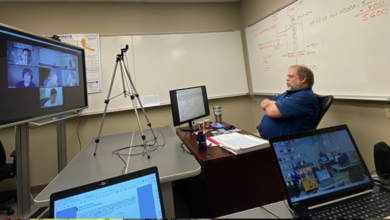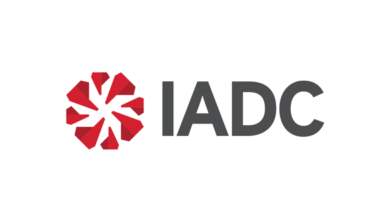By Linda Hsieh, Editor & Publisher
Since the last time this magazine went to press, on 28 February, it feels like the world has been turned upside down. At that time, the World Health Organization had yet to declare COVID-19 as a pandemic, the US had only 60 confirmed cases of the virus, and IADC staffers – myself included – were preparing to head to Galveston, Texas, to attend the IADC/SPE International Drilling Conference.
What a difference a couple of months has made. Since the WHO’s pandemic declaration on 11 March, most businesses deemed to be non-essential sent their employees home. People stopped flying as more and more countries imposed travel restrictions and quarantine measures. OTC was canceled.
As of 5 May, there were nearly 1.2 million confirmed cases of COVID-19 in the US, according to the Center for Disease Control, and more than 3.5 million confirmed cases worldwide, according to the WHO.
Amid all of this, demand for energy has tanked, as has the price of oil. While in late February we were worried about WTI dipping below $50/bbl, now we seem to have entered a whole new world where negative pricing on WTI futures is not only possible but a reality.
Pressures ratchet up
Not surprisingly, in this environment, the drilling industry has come under intense financial pressure. Many drilling contractors, in particular, had been looking forward to 2020 as a year of recovery after five difficult years of sustained low activity and low dayrates. Those hopes have now been dashed.
In the US, the land rig count was down to 392 as of 1 May. That’s a whopping 574-unit decline from the 966 count a year ago. As operators slashed their CAPEX budgets one after another during March and April – ExxonMobil, for example, has said it plans to lay down 75% of its Permian rigs this year – it’s clear that things are only going to get worse before they get better. Recent forecasts have called for the rig count to drop to the low 300s or even 200 by year-end.
“The whole market has changed,” said Jody Helbling, General Manager and Partner at Energy Drilling Company. “The short-term strategy for drilling companies is just survival. You’ve got to figure out how you’re going to get through this. I think it’s going to be about trying to make the best with what you’ve got.” (See our shale report on Page 20.)
Oil and Gas UK (OGUK) stated in its April Business Outlook report that drilling activity could be halved this year. So far in 2020, only 24 new wells have been spudded in the region, compared with 49 this time last year, they said.
The report also stated: “There has been pressure to volunteer contract rate reductions, and OGUK is aware of a number of examples throughout the supply chain where reductions of up to 40% have been requested. In some cases, these are in addition to reductions seen during the previous downturn, compounding pressure on companies.”
Operational challenges
Not just financially but also operationally, the pandemic is forcing the drilling industry to tackle new challenges. OGUK’s report noted that 87% of E&P companies have experienced issues in the movement of goods due to virus-related disruptions. There have also been reports of companies needing to charter flights to transport personnel and/or goods due to a lack of available commercial flights.
For drilling contractors, such unprecedented levels of uncertainty in the supply chain require that they not only keep more inventory on hand but also work with customers and suppliers more closely than ever before. See our reports on supply chain challenges (Page 10) and rig personnel transfers (Page 15).
While there is doubtlessly a tough patch ahead for the drilling industry, it can be seen in the following pages that optimism abounds for the future. We continue to innovate on automation and technology, on training and our safety culture, on equipment and software that will push the performance of our drilling rigs to new highs.
Once the world moves past the current crisis, we will emerge stronger than ever. In the meantime, keep calm and keep on drilling. DC





